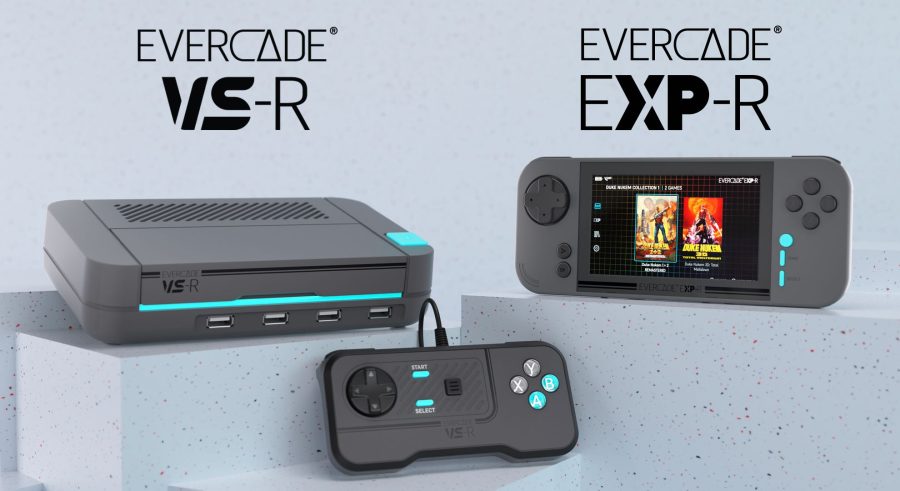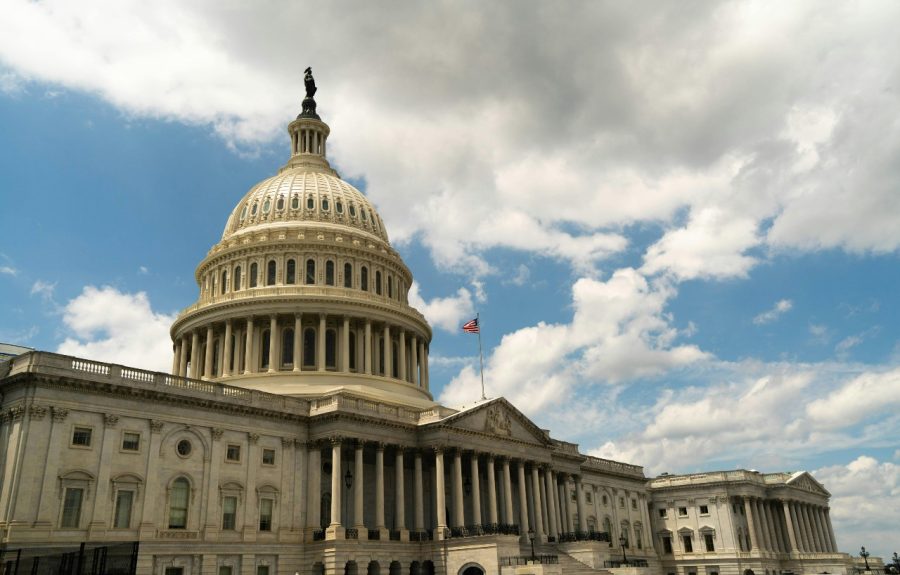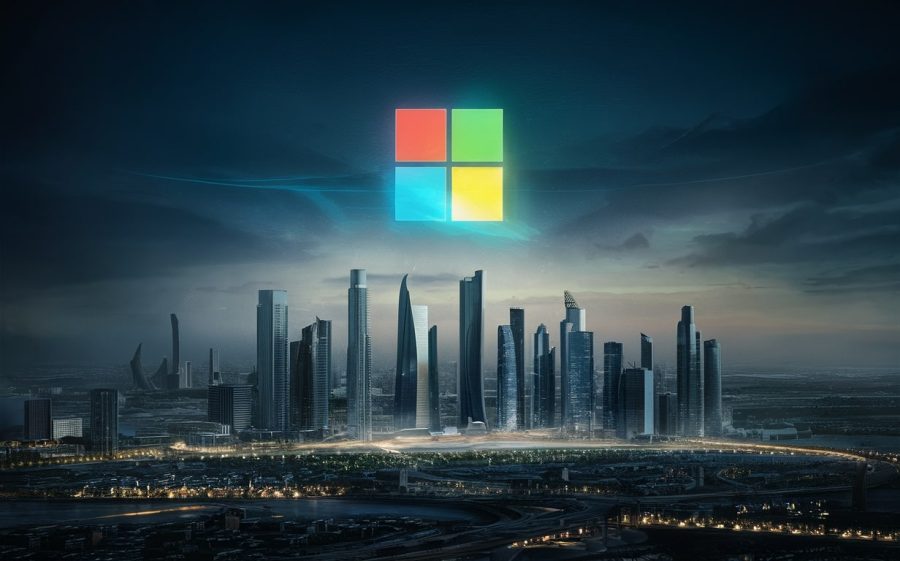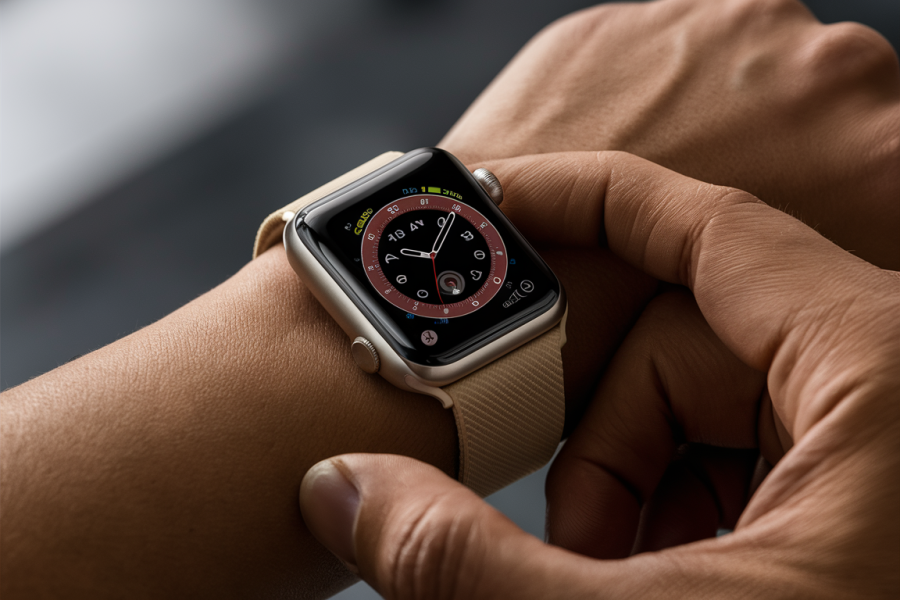There has been a lot of discussion surrounding location-based services in the past months, much of it centered on the so-called “check-in” applications – the apps that allow users to register their location at a particular venue using a mobile social networking type service like Loopt, Gowalla, Foursquare, Brightkite, SCVNGR and others.

But until now, these apps have been considered more hype than bite. A new study released today seems to state otherwise.
From location-based media company JiWire, there comes a new report focused on Wi-Fi use, location-based services and their associated trends. While this study looks at the data from the angle of the holiday shopper (obviously hoping for press coverage by those focused on holiday news stories), there are still some statistics worth mentioning from its findings.
We won’t delve into all the details – you can read about the other data here – instead, we’re just going to focus on what JiWire discovered regarding usage of check-in applications.
Is This a Surge in Mobile Check-ins, Bad Data or Something Else Entirely?
JiWire divvies up the “on-the-go audience” into some interesting segments. For example, it found that nearly half (49%) are open to checking-in to a location. That’s a dramatically higher percentage than has been reported elsewhere, numerous times. (See: Pew Internet & American LIfe Project report, 11/2010, Myxer report, 9/2010, Harris Interactive study, 8/2010, Forrester report, 7/2010).
The difference here, apparently, is that JiWire looks at the “on-the-go” user while the others are looking at a larger slice of the mobile or Internet population. For what’s it worth, JiWire defines the “on-the-go” user as someone either on a laptop, tablet (e.g. the iPad) or mobile phone (most likely a smartphone) and who’s not at home or at their office. That is, the “on-the-go” user is someone who is truly “on-the-go.”
But nearly half are checking-in?Either JiWire’s findings speak to a dramatic shift in the “check-in” trend, the slice of the pie they’re examining is more narrow and therefore more “checkin-friendly” or someone has their data wrong. We’ll let you decide which it is.
The Findings: Why Checking In, Mobile Coupon Use
Regardless of your opinion on that, here’s what they found:
?Among those who are doing so, 29% are looking for deals while 17% are just sharing their location.
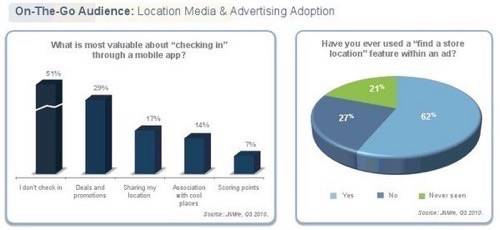
On average, 30% of this audience is willing to travel over five miles to redeem a mobile coupon. However, certain types of promotions have more appeal than others. For example, mobile users are
more likely to travel for offers pertaining to entertainment
, followed by retail stores then restaurants.
Consumers are willing to travel the least distance for coupons from bars or cafés
, with the largest percentage saying they would travel just under five blocks.
Whether or not you buy the check-in usage data cited above, these details are relevant to note. Even if you think that this survey skews towards those mobile users who are more “early-adopter-ish” when it comes to mobile application use, there are still some general trends as to how those consumers are using these types of apps that are worth examining.
It seems that marketing drink coupons and free coffees to mobile users may not draw a crowd from all over town, but can help cement relationships with your core local customer base. Offers for entertainment-related discounts or retail purchases will have people traveling further, but maybe not as far as you would think.
What’s the takeaway for this data, then? Maybe it’s that location-based mobile couponing/discounts/deals is a much more personalized, hyper-locally targeted service than we realized. So many mobile coupon applications offer deals for a city, for example, buy not a neighborhood. That could be a mistake, as it turns out.






